Queue halcyon flute music. Queue short people with oversize, hairy feet. Queue quite possibly the most amazing attraction you’ll see on your New Zealand adventure. Welcome to Hobbiton, a now-permanent structure that was originally constructed as a temporary set for the Shire scenes in the Lord of the Rings and Hobbit films. Fans of the books and films will thrill to be in the middle of this movie set and imagine themselves running up to Bag End to have afternoon tea with Bilbo Baggins.
Hobbiton is nestled into lush verdant hills on a private family farm a couple hours south of Auckland. According to our guide, when producer and director Peter Jackson approached the family about using their land for the set of his films, they agreed on condition that he would return everything to its original pastoral condition when filming was finished. The Lord of the Rings films then went to on become a massive success and the farm-owner’s friends and neighbors were eager to see the Hobbit village before it was taken down. Hmm, thought the owners, we might have something here….
When Peter Jackson came to them again about rebuilding the Shire for the Hobbit films, they agreed on condition that he make the structure permanent, designed to last for a long time so they could make it a tourist attraction once filming was finished. Jackson agreed.
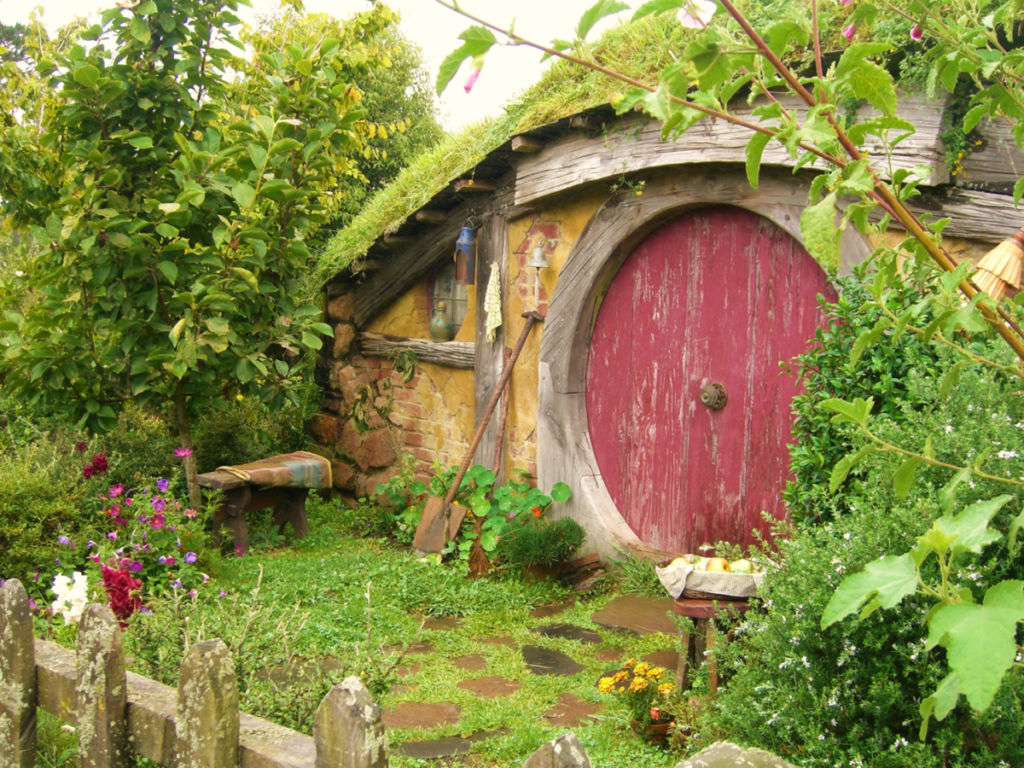
Maybe it’s because it was a movie set, maybe it’s because it feels like stepping into another place and time, maybe it’s the isolated location miles from civilization. Whatever the cause, Hobbiton casts a magical spell that you feel the moment you step off the transport bus into this special place.
Dozens of round doors are snuggled into gentle green hills. Woven between the Hobbit holes are gardens and fruit trees, laundry hanging to dry, and other evidence of daily life. Wheelbarrows, hedge trimmers, and baskets of produce are carefully placed to give the impression of habitation, of people having just taken a break from their work to have a spot of lunch. You half expect to see them sitting at the table on the other side of those little windows.
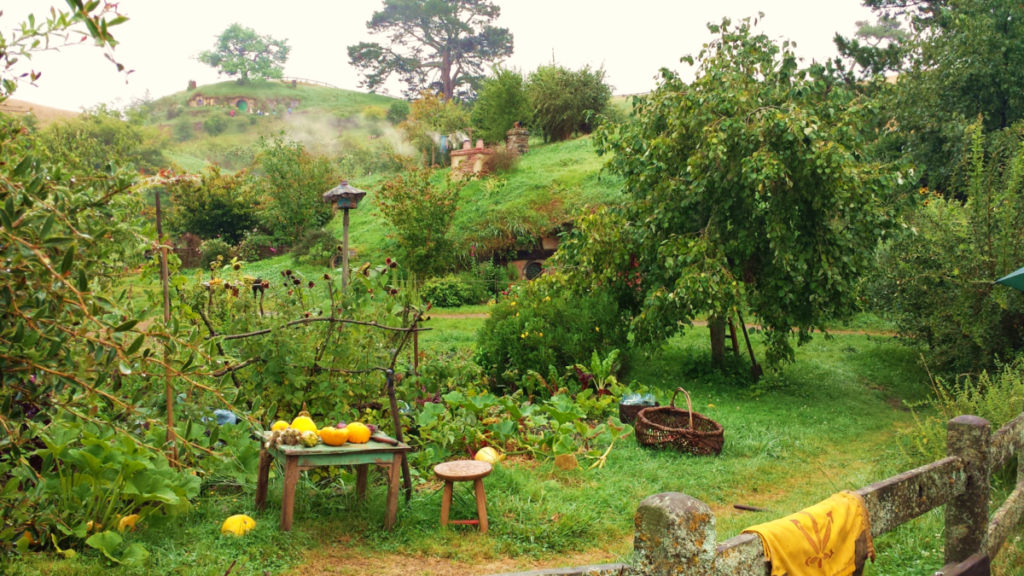
A full-time staff of gardeners keeps the real fruit and vegetable gardens in prime condition—planting, weeding, harvesting. They work for several hours each morning and leave things looking as if Hobbiton is really inhabited by the hairy-footed folk. It’s enchanting and even a little bit surreal.
Those little round doors do not conceal Hobbits, however. The hollowed out spaces they hide contain nothing more than storage areas and most of the doors are locked at that. All the movies’ indoor scenes were filmed in a studio.
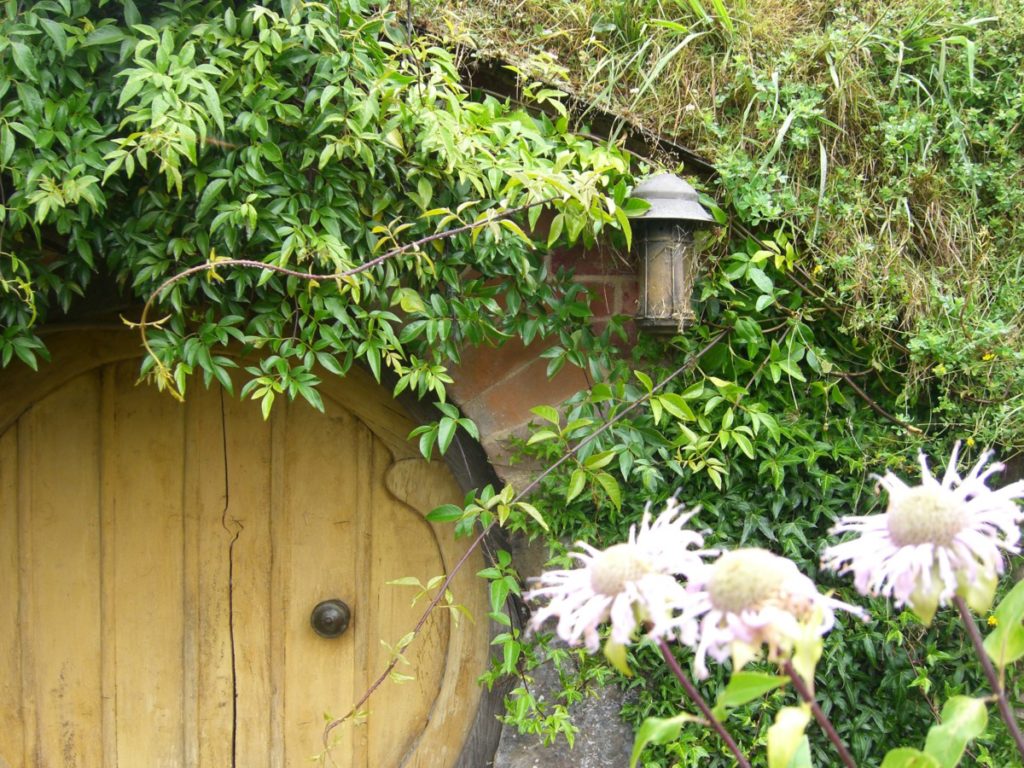
According to our guide (and a documentary I saw about it years before I visited), when Hobbiton was first constructed, the film crew spent months making it look lived-in. The let the grass grow up around the houses after construction was complete. Crew members walked each morning from a Hobbit hole to its laundry line to hang up the wash, then did the reverse in the evening to create a natural footpath. They walked to and from the various habitations to create well-worn pathways between them. They created faux beehives that were so realistic in their construction and appearance, real bees took up residence in them!
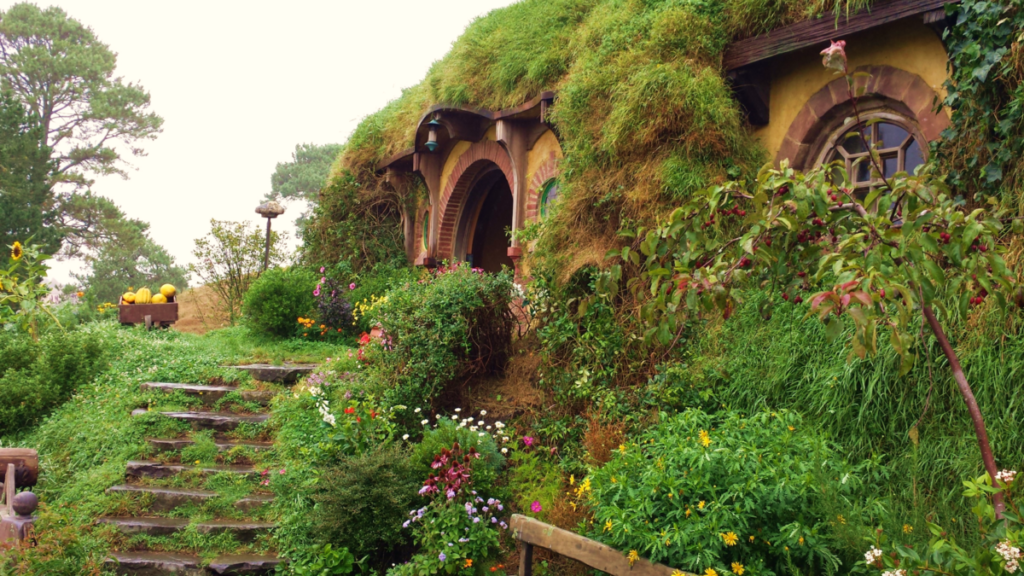
Being in the middle of a movie set was incredible—unbelievable and fantastic at the same time. As noted above, everything is carefully maintained to appear as though it really is an inhabited village. No detail is forgotten. Even the fake moss growing on the weathered white fence looked real. I could have stayed there for hours had it been allowed.
As it was, we had just under an hour to meander the gentle pathways. I say meander, but really we moved in a loosely controlled herd from spot to spot, shepherded along by our guide who gave us a bit of background or trivia at each location and then let us stare and photograph for several minutes before moving us gently along to the next stopping point. The tour ended far too soon with a visit to Green Dragon Inn for a complimentary beverage. (Note that the inn is not an actual inn where you can stay overnight. It’s more like a rustic pub with limited drink choices.) The inn, too, is exquisite in its detail and design, complete with hobbit-sized cloaks hanging from pegs on the wall.
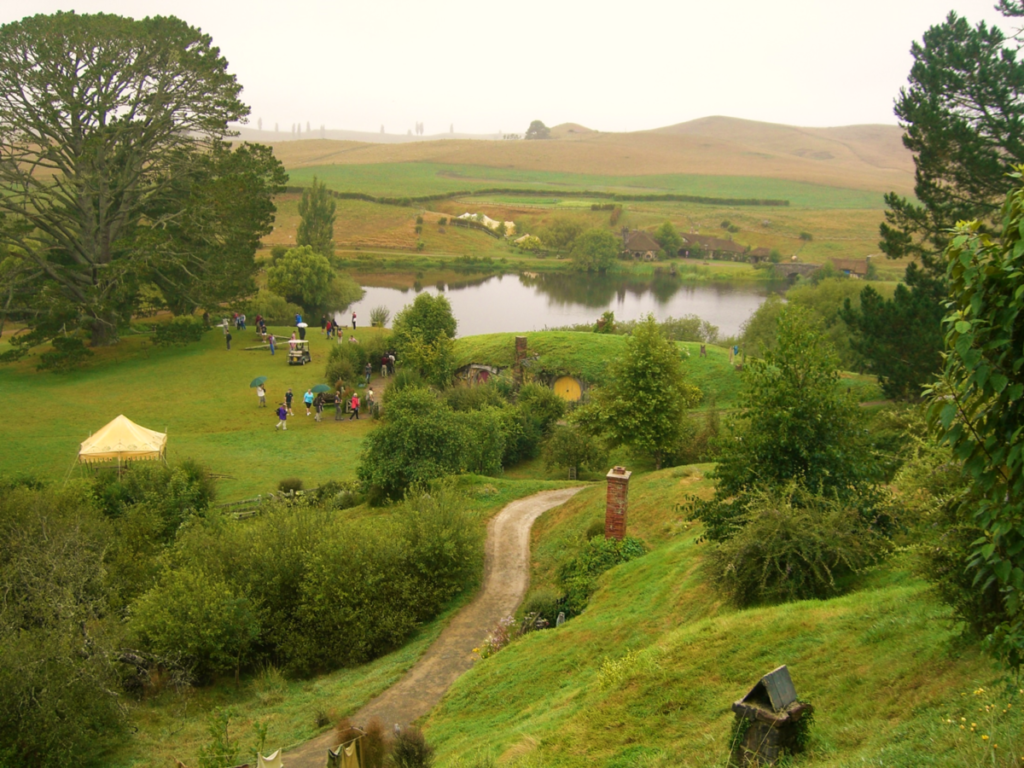
After a satisfying if too-brief tour, we boarded the transport bus to take us back to the parking lot and visitors’ center, feeling as if we were waking up from a wonderful dream we would remember forever.
Logistical notes: The visitors’ center features not only the ticket booth but also an underwhelming gift shop that had a surprisingly limited range of souvenirs and a café serving prepared food (nothing made fresh to order). Parking is free.
Tickets are issued for timed tours, which depart from the parking lot. Visitors must board a bus at their designated time for transport through the farm to Hobbiton—about a 10-minute ride. Umbrellas are provided once you get off the bus, if needed, and should be returned there before departure. Naturally another bus takes you back to the visitors’ center at the conclusion of the tour. You can spend as long as you’d like in the gift shop and café, although we didn’t find either to be compelling enough for more than a sandwich.
Click here for detailed information about Hobbiton’s location, how to get there, ticket prices and times, etc. It’s a must-see for any trip to New Zealand.
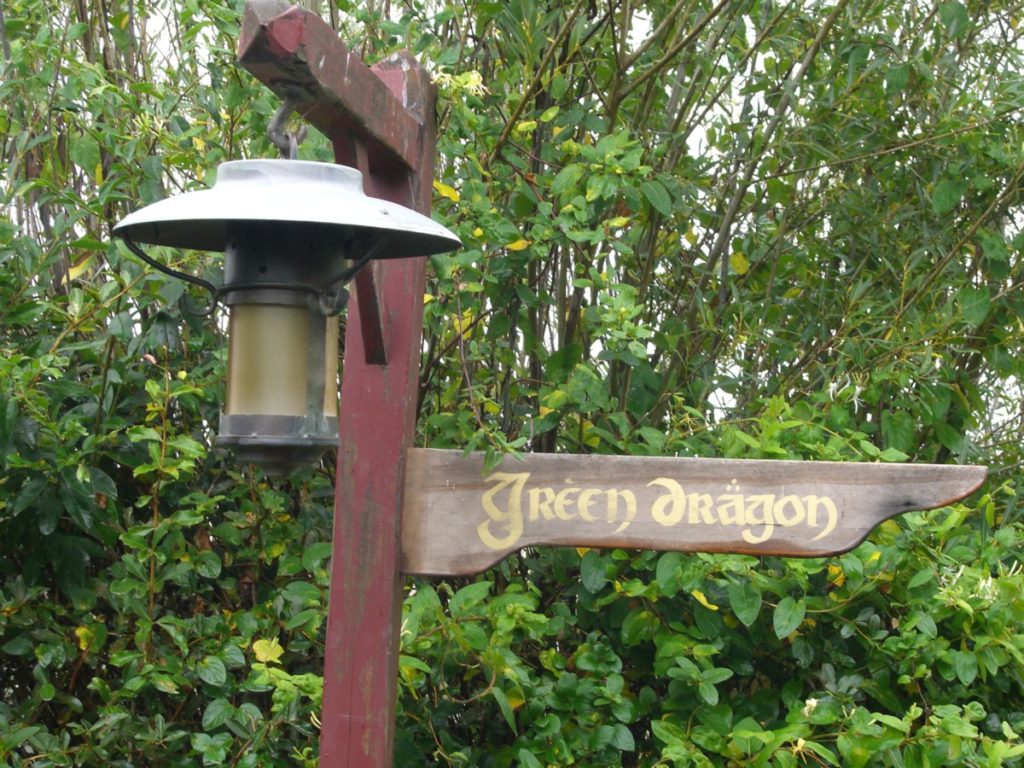


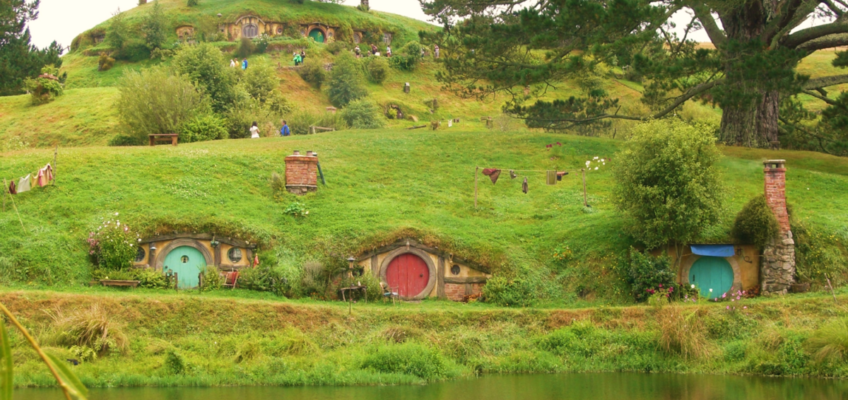




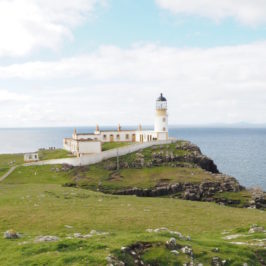
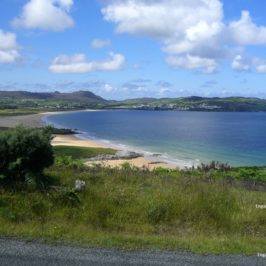
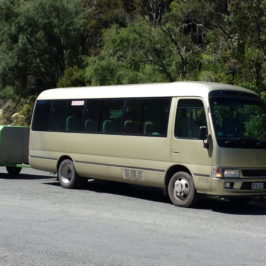
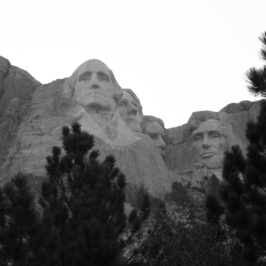
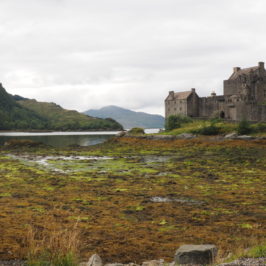
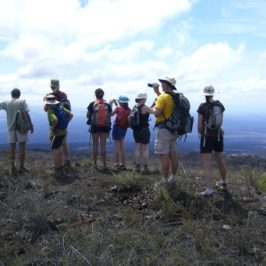
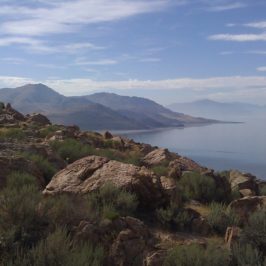
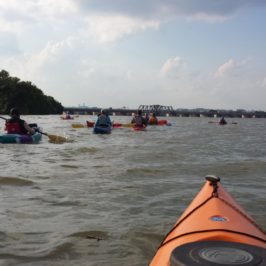
Leave a Reply